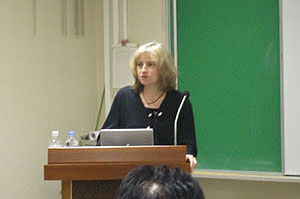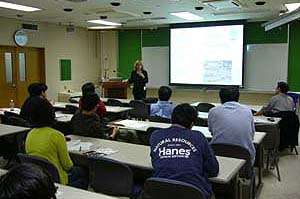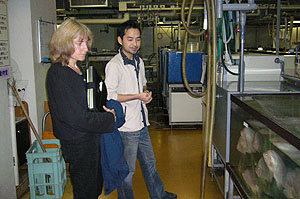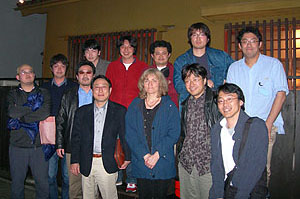|
|
 |
Title: |
Assembly of an RNP Complex for Intracellular mRNA Transport and Translational Control |
| |
Speaker: |
Dr. Anne Ephrussi
Unit Coordinator, Developmental Biology Unit, EMBL Heidelberg, Germany |
| |
Place: |
National Institute for Basic Biology Meeting room (111) |
| |
Date: |
April 12 (Wed), 2006 |
| |
Abstract: |
The coupling of mRNA localization to translational control
is a conserved strategy that allows precise spatial and temporal control
of protein expression within cells [1].
The Drosophila oocyte is an ideal model for studying the mechanism
of RNA localization-dependent translational control [2]. oskar mRNA,
which encodes the posterior determinant of the fly, is localized to the
posterior of the oocyte during oogenesis and is translationally repressed
prior
to localization at the posterior pole. Assembly of a functional oskar mRNA
localization complex begins in the nucleus with the splicing-dependent deposition
Exon Junction Complex proteins at
the first exon-exon junction in the mRNA [3]. The oskar 3’UTR is necessary
(but not sufficient) for mRNA localization to the posterior pole, and mediates
co-assembly of oskar mRNA into transport
complexes. oskar translational repression, which is coupled to mRNA
transport, is mediated by Bruno protein. It has been shown that Bruno repressor
binds to specific sequences in the oskar 3’UTR and
to Cup, an eIF4E-binding protein with which Bruno interacts, suggesting
a model for oskar translational
repression at initiation [4]. In vitro analysis has recently revealed
that, in addition to the proposed mechanism, a second, novel repression
mechanism cooperates to ensure tight control of oskar mRNA translation
[5]. The molecular mechanisms underlying oskar mRNP complex assembly,
localization and translational control will be discussed.
1. St Johnston, D., Nat Rev Mol Cell Biol, 2005. 6(5): p. 363-75.
2. Riechmann, V. and A. Ephrussi, Curr Opin Genet Dev, 2001. 11(4): p. 374-83.
3. Hachet, O. and A. Ephrussi, Nature, 2004. 428(6986): p. 959-63.
4. Nakamura, A., K. Sato, and K. Hanyu-Nakamura, Dev Cell, 2004. 6(1): p. 69-78.
5. Chekulaeva, M., M.W. Hentze, and A. Ephrussi, Cell, 2006. 124(3): p. 521-33. |
|


 Top Page
Top Page  Symposium/Meeting
Symposium/Meeting  EMBL Guest Seminar
EMBL Guest Seminar  Research Collaboration
Research Collaboration  Students Communication
Students Communication



